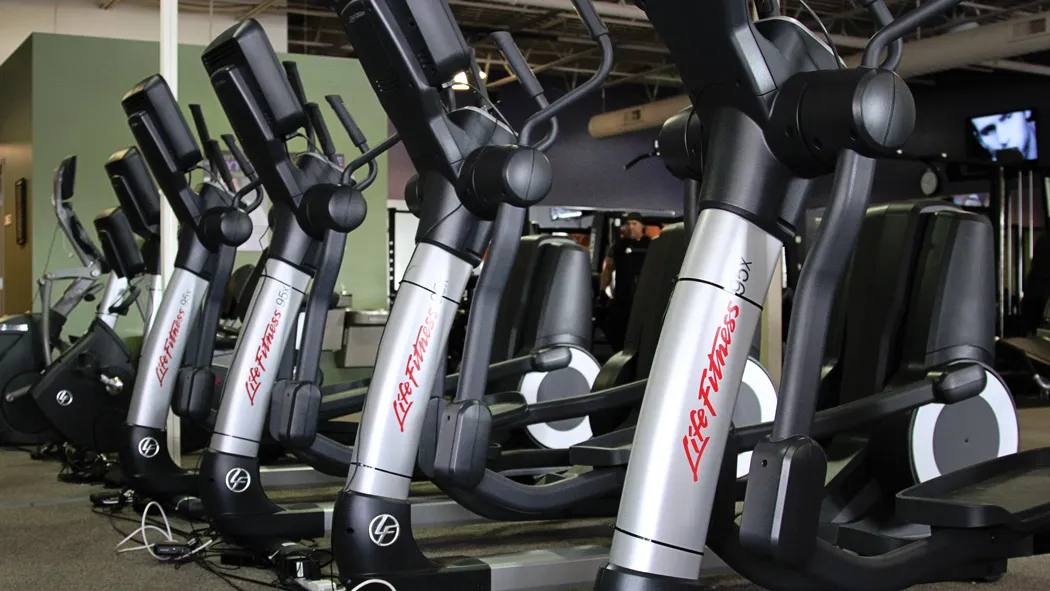
“Cardio” is usually one of the first types of exercise you’re exposed to when you begin a weight loss journey. However, cardio is so much more than a great way to torch calories.
Cardio, often referred to as cardiovascular or cardiorespiratory training, involves movements that increase your heart rate. The physiological goal of cardio training is to improve oxygen consumption by the body. Another way to look at it, investing in cardio will help your heart work harder and allow it to function more efficiently! Your heart is a big muscle and cardio is the way to make it stronger. If that doesn’t pique your interest, how ‘bout these benefits:
- Increased metabolism
- Improved hormonal profile (literally releases ‘feel good’ hormones!)
- Reduced risk of heart disease, high cholesterol, high blood pressure, and diabetes
- Weight loss
- Stronger heart & lungs
- Increased bone density
- Reduced stress
- Better sleep
- More energy
How Long, How Hard, How Often?
The simple answer… it depends! It depends on your goals and your fitness level. To get started, think baby steps. Do a little bit today that doesn’t make you feel all that uncomfortable; something you can complete and feel good. Start with 10 minutes at a time with an intensity that allows you to talk in sentences. Then, once you’re able to stick with that time and duration, add a little bit of time to your session and try 15-20 minutes each time. To reap the most benefit from your cardio sessions, you’ll want to work up to the CDC’s 2008 Physical Activity Guidelines:
- Adults should get at least 150 minutes of moderate-intensity exercise per week.
- Exercise recommendations can be met through 30-60 minutes of moderate-intensity exercise (five days per week) or 20-60 minutes of vigorous-intensity exercise (three days per week).
- One continuous session and multiple shorter sessions (of at least 10 minutes) are both acceptable to accumulate desired amount of daily exercise.
If you’re not logging this kind of time, don’t worry. Any amount of activity is better than being sedentary! Gradual progression of time, frequency, and intensity is recommended for best adherence and least injury risk.
What do I need to get started?
There’s only one thing you absolutely need to get started with a cardio workout – shoes. Depending on what type of activity you choose, you’ll want to invest in a good shoe that provides support in the way you’ll be moving. If you’re not sure what you might end up doing for your workout, try a cross trainer shoe to begin. Other gear you may want to take a look at might include:
- Clothing – almost every type of cardio activity has clothing dedicated to high performance. Unless you are logging serious miles running, biking or swimming, chances are lightweight, breathable exercise attire will do the trick to get you started.
- Watch – if you’re getting into walking, running or biking, some type of a timing device will help. To keep it simple in the beginning, choose a predictable route and see how long it takes you and how you feel. Next time out, try to go a little faster with the same route. Of course, if you’re exercising indoors, make use of the timing device on the machine.
- Music – music is a must if you’re doing your cardio alone! In group classes, the music is a given, but outside or on a cardio machine, you’ll want a great playlist to motivate you.
For the benefits we’ve discussed, you’ll need to aim for moderate and hard intensities. And, once you’re training consistently, you’ll want to mix in some higher intensity work that takes you breathless. Good rule of thumb, if you have long periods of time, the intensity can be less. If you’re short on time, it’s better to push the intensity to get the biggest bang for your buck. But, it’s most important that you simply start accumulating activity first! If you need a plan to stick to, try the Beginner’s Workout Calendar that’ll help you get started with about 3-4 days of workouts per week! You’ll be surprised how quickly you adapt to cardio training. The first step is just getting started. Try to focus on small successes along the way to keep you motivated. You may just find, regardless of the health benefits, the way cardio makes you feel will keep you coming back for more.